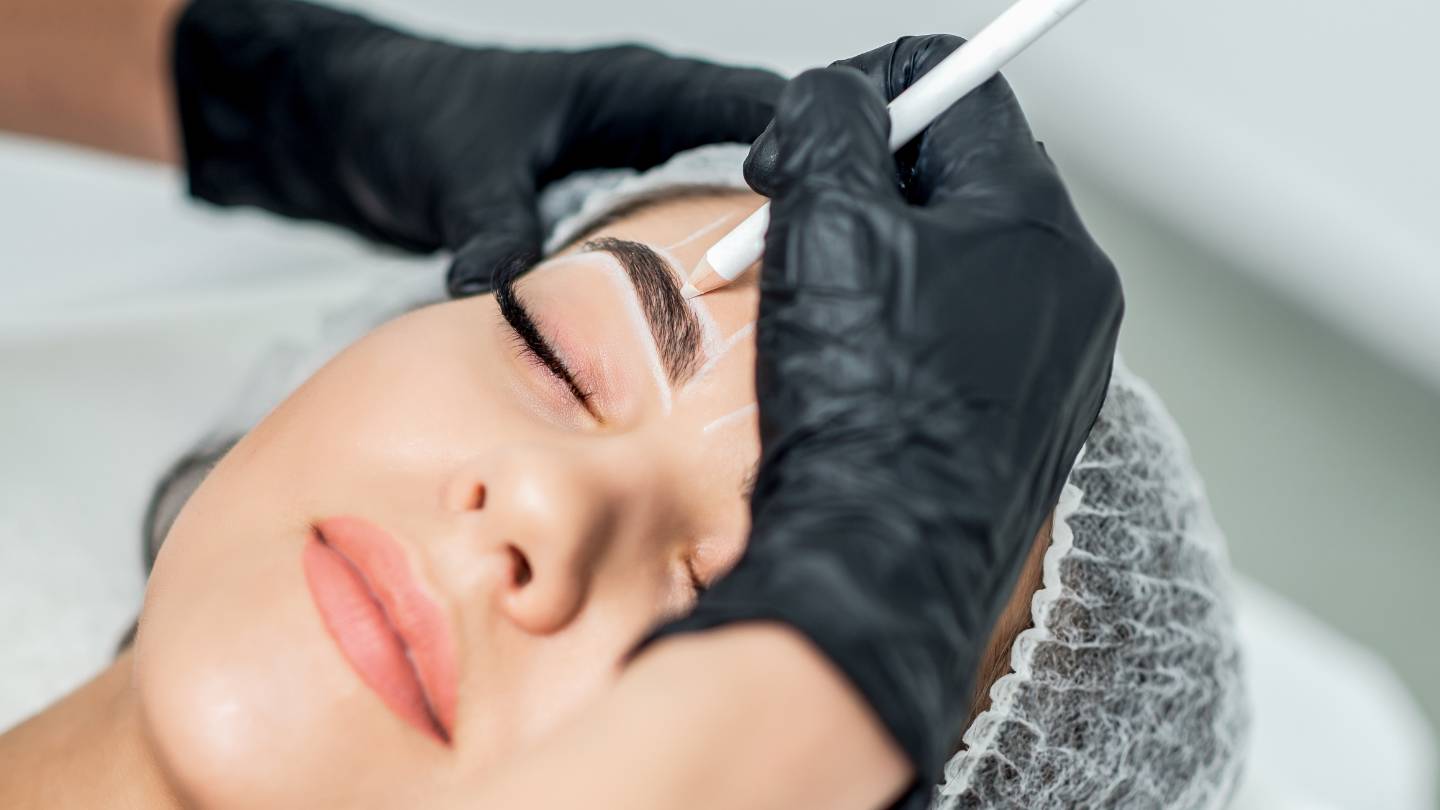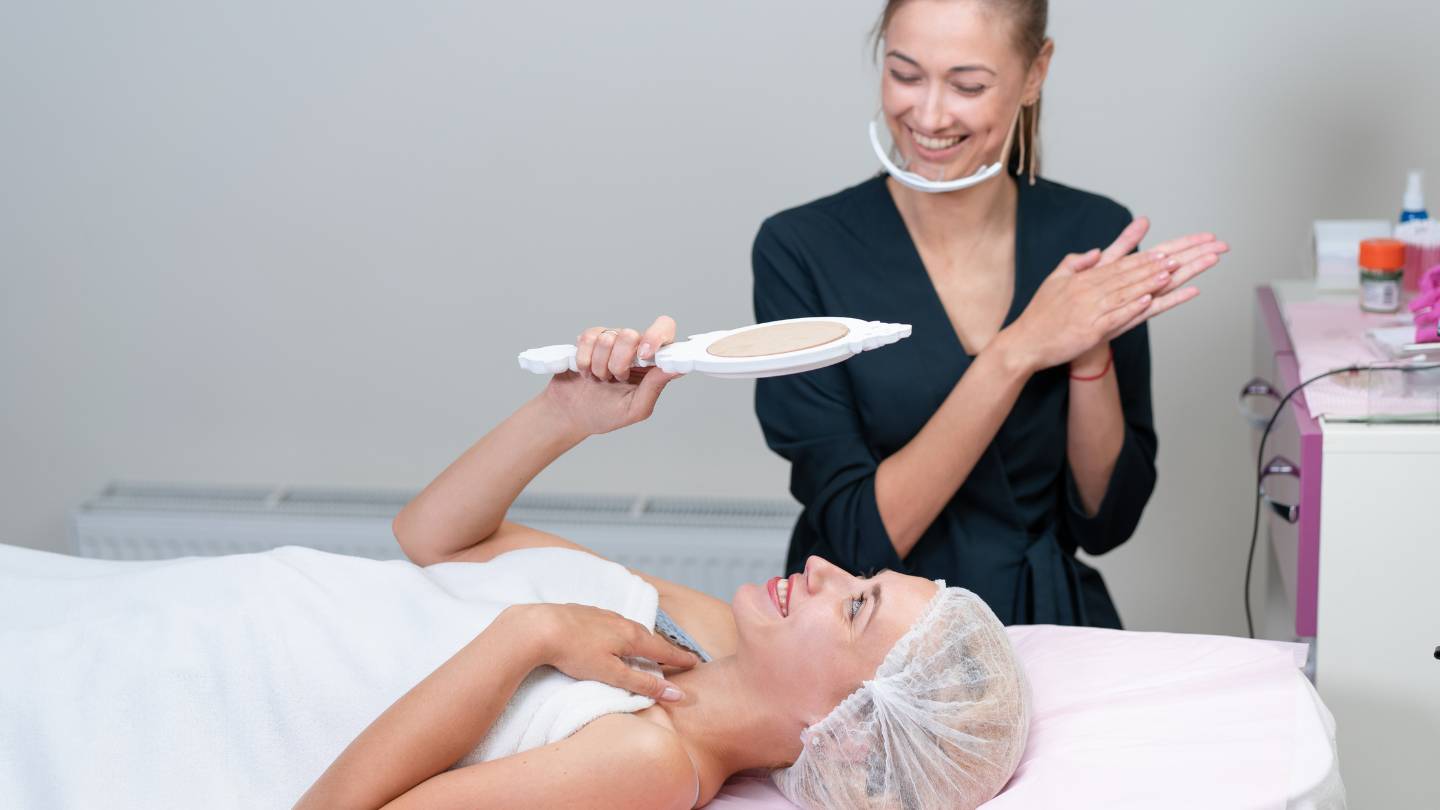Ombre brows, a popular form of semi-permanent makeup, provide a soft-shaded, powdery effect miming a natural, fuller brow. While this procedure can enhance facial features and reduce the need for daily makeup, many people experience itching as part of the healing process.
Itchiness is a common symptom following a tattoo procedure, including ombre brows, because the skin undergoes minor trauma when pigments are deposited under the surface. As your skin heals, scabs form, and the body initiates its natural response to repair the area, leading to sensations of tightness and itching.
Itching typically arises within the first few days after the procedure and can last for about a week or more, depending on your skin type and aftercare routine. Factors like dryness, scabbing, and the immune system’s response contribute to this discomfort.
It’s important not to scratch the area, as it can cause pigment loss, scarring, or infection. Proper aftercare, such as moisturising the area and avoiding exposure to excessive moisture, can help minimise irritation and support healing.
Let’s get straight to the point.
A semi-permanent makeup technique called ombre brows provides a soft, shaded look, but itchiness is a common part of the healing process. It occurs as the skin heals from the minor trauma caused by the tattoo, resulting in scabs, dryness, and inflammation.
Itchiness usually begins a few days after the procedure and can last about a week. Proper aftercare, including moisturising and avoiding scratching, prevents complications like pigment loss or infection.
If the itchiness is severe, soothing remedies like aloe vera, cold compresses, or mild hydrocortisone cream can help. The healing journey lasts 4 to 6 weeks, during which the itchiness is temporary, and fully healed brows will offer a long-lasting beauty enhancement.
Key Causes Of Itching After Getting An Ombre Brows Tattoo
Several factors contribute to the itchiness commonly experienced after an ombre brow tattoo:
- Healing of Micro-Incisions: The ombre tattoo process involves creating tiny wounds in the skin to deposit pigment. Itchiness is the body’s natural reaction as these micro-wounds begin to heal.
- Scab Formation: Itching is often associated with the formation of scabs. As the skin regenerates beneath the scabs, nerve endings are stimulated, resulting in an itchy sensation.
- Dryness: As the skin heals, it can become dry and tight, contributing to itchiness. Keeping the area moisturised is important for alleviating discomfort.
- Inflammation: Itching is a common side effect of inflammation. The body’s inflammatory response helps repair the skin and can lead to irritation and itching.
- Allergic Reactions: In rare cases, itchiness may suggest an allergic reaction to the aftercare or pigment. If itching is accompanied by redness or swelling, consult your technician immediately.
- Infection: Excessive itchiness, especially when accompanied by pus, redness, or fever, may indicate infection. Careful adherence to the aftercare recommendations is critical to minimise this risk.
Managing Itchiness After Ombre Brows Tattoo
Itchiness is an expected part of the healing process, but several ways exist to alleviate the discomfort. Here are the most effective methods:
1. Avoid Scratching
- Why It’s Important: Scratching can disrupt the healing process, leading to pigment loss, scarring, or infection. Avoid touching the treated region.
- Alternative Methods: If the itchiness becomes unbearable, gently pat the area with a clean finger.
2. Use Aftercare Ointment
- Moisturising: Applying the prescribed aftercare ointment can keep the area hydrated, prevent excessive dryness and minimise itchiness.
- How to Apply: Use a thin layer to avoid clogging the pores, which can slow healing.
3. Apply a Cold Compress
- Immediate Relief: A cold compress can help soothe the skin and reduce irritation. Take caution not to place the compress on top of the brows; wrap it in a clean cloth to avoid any moisture contact.
4. Aloe Vera Gel
- Natural Soothing: Aloe vera has anti-inflammatory properties that can calm irritated skin. Put some organic aloe vera gel on the brows for relief.
5. Calamine Lotion
- Soothing Option: Calamine lotion can be used to ease itching. Apply it sparingly, taking care not to disturb any scabs.
6. Hydrocortisone Cream
- For Severe Itching: A mild hydrocortisone cream may help alleviate intense itching. Use it cautiously and avoid over-application to prevent skin thinning.
7. Antihistamines
- Oral Relief: If the itching is particularly severe, antihistamines may offer relief by reducing the body’s histamine response. Before taking any drug, speak with your doctor.
The Healing Process Of Ombre Brows
Ombre brows are a semi-permanent makeup method that includes putting colour on the skin to produce a gradient effect. As with any cosmetic procedure, there is a healing process involved that varies from person to person.
This healing period usually lasts 4 to 6 weeks, with specific stages affecting the appearance and comfort of your brows. One of the most common sensations during healing is itchiness, especially when the skin begins to scab and regenerate.
The Healing Journey: Day-By-Day Overview
The process typically unfolds in stages:
- Initial Stage: In the first few days after the procedure, your eyebrows will seem more defined and darker than expected. This is normal and will subside as the pigment settles into the skin.
- Scabbing Phase: Around day 3 or 4, scabs will form over the treated area. This phase often brings itchiness, which can be uncomfortable but is essential to healing. Resist the temptation to scratch, which can interfere with pigment retention and outcome.
- Flaking and Fading: As scabs naturally flake off, the brows may look patchy or lighter in certain areas. This is a temporary stage, and the final colour will emerge once the skin has fully healed.
- Final Stage: After 4 to 6 weeks, the brows will fully heal, revealing their true shape and colour.
Extra Advice For Tattooed Ombre Brows Aftercare
Proper aftercare is essential for both minimising discomfort and ensuring optimal results. Here are some guidelines to help you through the healing process:
- Keep the Area Clean: Gently wash the brows with a mild, fragrance-free cleanser to remove buildup. After cleansing, apply a moisturiser recommended by your technician.
- Remain Hydrated: Consuming copious amounts of water can foster healthy skin and speed healing.
- Avoid Sun Exposure: Direct sunlight can exacerbate itching and affect healing. If you need to be outdoors, wear a hat to protect your brows.
When To Consult A Doctor About Your Tattooed Ombre Brows
Itching is typically part of the normal healing process, but sometimes it may signal a problem. Seek medical attention if you experience any of the following:
- Severe Redness or Swelling: While mild redness is normal, excessive swelling or redness can indicate an allergic reaction or infection.
- Discharge or Pus: Any discharge from the tattooed area, especially pus, is a clear sign of infection and requires immediate attention.
- Fever or Malaise: If you feel unwell or develop a fever, it could indicate a more serious infection. Consult a healthcare provider right away.
- Scabs That Don’t Heal: If scabs do not heal within the expected time frame (about two weeks), you must contact your technician or a healthcare professional.
Steps To Take If You Suspect A Problem
- Contact Your Technician: If you’re unsure whether your symptoms are normal, contact your technician. They can provide guidance based on their experience with ombre brow procedures.
- Consult a Healthcare Provider: If your symptoms intensify or continue, it is best to seek professional medical assistance. Early intervention can prevent further complications.
Conclusion
Ombre brows offer a beautiful, natural-looking enhancement to your appearance, but the healing process can sometimes be uncomfortable due to itchiness. This sensation is normal as the body repairs the micro-wounds created during the procedure.
Skin healing, scab formation, dryness, or inflammation typically cause itchiness after ombre brow tattoos. Proper aftercare, including cleaning and moisturising the area, using soothing products like aloe vera or hydrocortisone, and avoiding scratching, can manage the sensation.
By adhering to aftercare instructions and understanding the stages of healing, you can navigate this process with minimal discomfort. See medical advice promptly if you encounter any peculiar signs or symptoms, like extreme redness, swelling, or discharge.
Ombre brows require patience during healing, but once fully healed, they provide a low-maintenance, long-lasting beauty enhancement that’s worth the wait.
FAQs About Ombre Brows Tattoos
Is It Normal For My Ombre Brows Tattoo To Itch?
Yes, experiencing itchiness after an ombre brows tattoo is a standard part of healing. It’s a natural response from your body as the skin repairs itself from the micro-wounds created during the tattooing process.
What Causes The Itchiness After Getting Ombre Brows?
The itchiness can be attributed to several factors, including the skin’s natural healing and inflammatory response, the formation and flaking off of scabs, and the skin becoming dry and tight during the healing process.
How Long Does The Itchiness Last?
The itchiness typically begins a few days after the procedure and can last for a week or two, varying from person to person. It usually subsides as the healing process progresses.
Can I Scratch My Itchy Ombre Brows?
No, scratching the itchy Area is discouraged as it can lead to pigment loss, scarring, and infection. If the itchiness becomes unbearable, gently patting the Area with a clean finger can provide relief without damaging the brows.
How Can I Alleviate The Itchiness Of My Ombre Brows Tattoo?
You can alleviate itchiness by applying a fragrance-free, gentle moisturizer or aftercare ointment prescribed by your technician, using a cold compress, applying aloe vera gel, or using calamine lotion. Avoid scratching the area.



